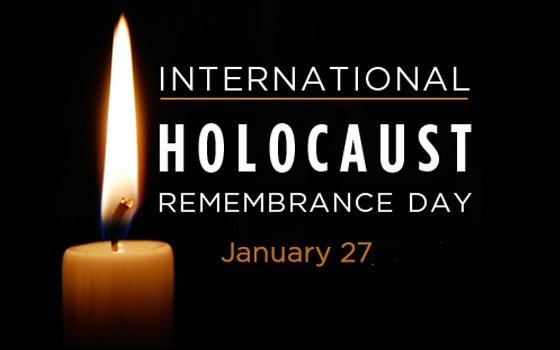Today is INTERNATIONAL HOLOCAUST REMEMBRANCE DAY
Why today? Well on this date in 1945 the Soviet Red Army arrived at the Auschwitz-Birkenau concentration camp in Poland and liberated the survivors.
This is the day we remember the genocide of approximately 11 to 17 million people by the National Socialist German Workers’ Party (Nazi) regime in Germany led by Adolf Hitler during World War II. This figure includes the deliberate extermination of six million European Jews, and the Nazi’s systematic murder of Roma; Soviet civilians, Soviet prisoners of war; ethnic Poles; the disabled; Homosexual men; and political and religious opponents. Millions of lives taken by hatred and intolerance.
The term “holocaust” comes from the Greek holókaustos: hólos, “whole” and kaustós, “burnt”. It is also known as The Shoah.
The treatment and killings of the over 15,000 homosexual men is less known but we observe and remember them today. Between 1933-45, more than 100,000 men were arrested and registered by police as homosexuals (“Rosa Listen” or “Pink Lists”), and of these, some 50,000 were officially sentenced. Most of these men spent time in regular prisons, and an estimated 5,000 to 15,000 of the total sentenced were incarcerated in concentration camps. It is unclear how many of these 5,000 to 15,000 eventually perished in the concentration camps.
The leading scholar Ruediger Lautman however believes that the death rate in concentration camps of imprisoned homosexuals may have been as high as 60%. Homosexuals in camps were treated in an unusually cruel manner by their captors and were also persecuted by their fellow inmates. This was a factor in the relatively high death rate for homosexuals, compared to other “anti-social groups”.
James D. Steakley writes that what mattered in Germany was criminal intent or character, rather than criminal acts, and the “gesundes Volksempfinden” (“healthy sensibility of the people”) became the leading normative legal principle. In 1936, Himmler created the “Reich Central Office for the Combating of Homosexuality and Abortion”. Homosexuality was declared contrary to “wholesome popular sentiment,” and homosexuals were consequently regarded as “defilers of German blood.” The Gestapo raided gay bars, tracked individuals using the address books of those they arrested, used the subscription lists of gay magazines to find others. They encouraged people to report suspected homosexual behavior and to scrutinize the behavior of their neighbors.
Tens of thousands were convicted between 1933 and 1944 and sent to camps for “rehabilitation” where they were identified by yellow armbands and later pink triangles worn on the left side of the jacket and the right trouser leg, which singled them out for sexual abuse. Hundreds were castrated by court order. They were humiliated, tortured, used in hormone experiments conducted by SS doctors, and killed. Steakley writes that the full extent of Gay suffering was slow to emerge after the war. Many victims kept their stories to themselves because homosexuality remained criminalized in postwar Germany. Around two percent of German homosexuals were persecuted by Nazis.
More recently however German state television channel Deutsche Welle updated this figure to “almost 55,000” deaths following the study of documents from archives in East Germany that had been inaccessible to researchers for decades after the war.
After the war, the treatment of homosexuals in concentration camps went unacknowledged by most countries. Some that did escape were even re-arrested and imprisoned based on evidence found during the Nazi years. It was not until the 1980s that governments acknowledged this episode, and not until 2002 that the German government apologized to the Gay community.
